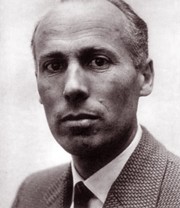
“The prize was awarded for his highly original, rigorous and useful work completed the previous year and published under the title ‘The distribution of the AB0 blood groups in Switzerland’. Professor Rosin developed new methods of analysing and presenting genetic geography. The way he documented and processed the findings is still relevant today. The work portrayed the geographical distribution of blood groups in Switzerland and made a crucial contribution to population genetics, which is a central focus of the work of geneticists.”
Vereinfacht gesagt beruht die Zugehörigkeit eines Menschen zu einer der vier ‘klassischen’ Blutgruppen darauf, dass jedem Individuum zwei Erbfaktoren aus einer Gruppe von drei Genen zugeteilt sind. Es gibt demnach sechs verschiedene Genotypen und wegen der Dominanz der Gene A und B über 0 die vier bekannten Phänotypen 0, A, B, AB. R. erstellte nun auf der Grundlage eines einzigartigen Datenmaterials – Blutgruppenbestimmungen von über 200’000 Wehrmännern – und mit eigens dafür entwickelten statistischen Verfahren zwei Karten der Schweiz mit den Häufigkeiten der Blutgruppengene klassiert nach Heimatgemeinden. Als herausragenden Befund von R.s Forschungen wurde von den Gutachtern die Tatsache gewertet, dass trotz der relativ geringen Mobilität der Schweizer Bevölkerung die sich abzeichnenden Gen-Grossregionen überraschenderweise mit den politischen, konfessionellen oder sprachlichen Grenzen nicht übereinstimmen.

